With Emirates planning on retiring the Airbus A380 by the early 2040s at the latest, the Dubai-based carrier’s fleet is going to be undergoing major changes in the next couple of decades. As Emirates renews its fleet, the Boeing 777X will be the single most important piece of that puzzle.
In this post I wanted to recap everything we know about Emirates’ Boeing 777X order, delayed as it may be. This is an updated look at the 777X plans, in light of what we recently learned, from Emirates’ additional 777X order, to the carrier revealing more details about its cabins.
In this post:
Emirates has 205 Boeing 777Xs on order
Emirates placed its first Boeing 777X order many years ago, initially with the goal of replacing its current 777 fleet. However, over the years, plans have changed a bit. The order was placed at a time when it didn’t seem like the Airbus A380 would be discontinued.
However, with the A380 no longer in production, the 777X will eventually be the world’s largest passenger jet, meaning it will replace A380s for the Dubai-based carrier. That’s also why Emirates recently placed an additional 777X order.
For context, Emirates’ fleet currently consists of just over 250 aircraft, including A380s and 777s. The airline then has over 300 aircraft on order, spread across three types of aircraft:
- Emirates has 65 Airbus A350s on order, all of which are for the A350-900 variant; these are expected to be delivered starting in 2024
- Emirates has 35 Boeing 787s on order, with 20 being for the 787-8 variant and 15 being for the 787-10 variant; there’s no timeline for when these planes will be delivered, though
- Emirates has 205 Boeing 777Xs on order, with 35 being for the 777-8 variant and 170 being for the 777-9 variant; the 777-9s should be delivered starting in 2025, and the 777-8s should be delivered starting in 2030
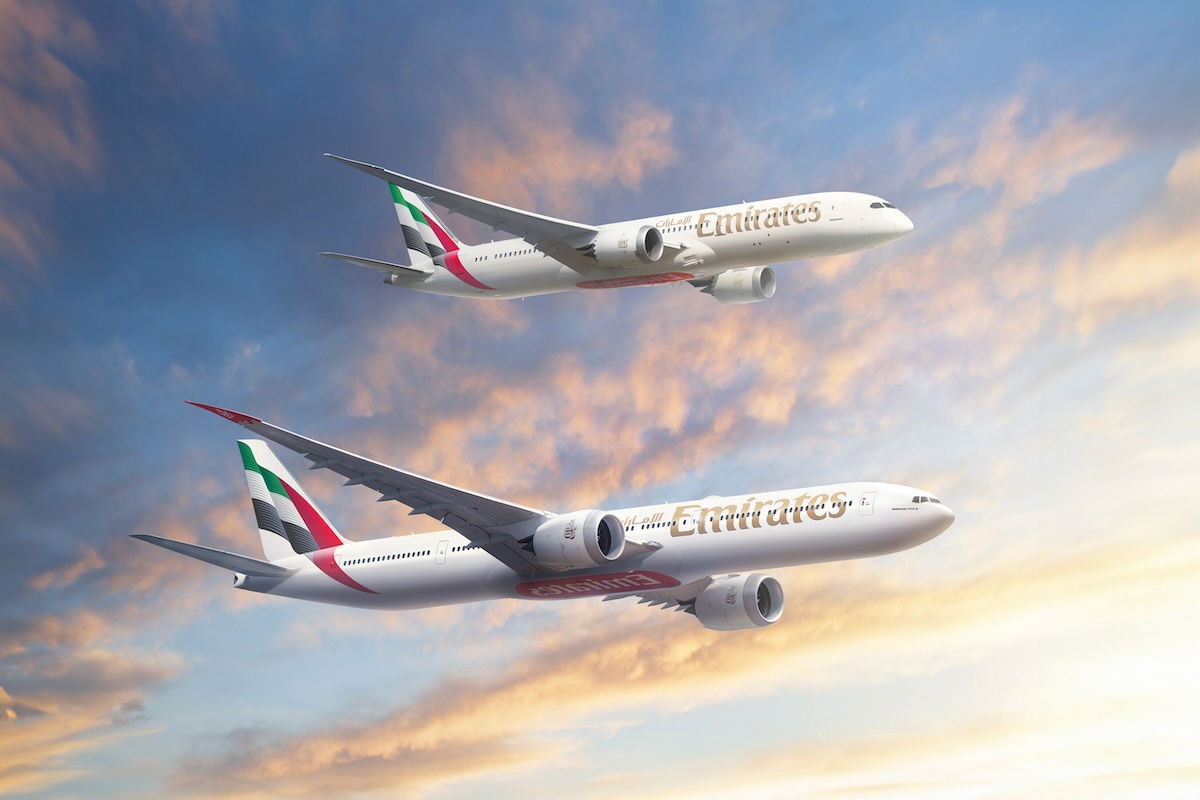
For those not familiar with the Boeing 777X, this is the next generation of the 777. The aircraft has two variants — the 777-8 and 777-9 — and these planes are longer range, larger, and more fuel efficient, than previous generation 777s (which Emirates currently flies).

Emirates should take delivery of 777Xs in 2025
This is where it gets tricky. Emirates was supposed to take delivery of its first Boeing 777X in 2020. Unfortunately the aircraft has had serious certification issues, and has been delayed by at least five years. It’s now expected to be delivered in 2025.
It’s anyone’s guess if that timeline gets pushed back even further. Suffice it to say that this has had serious impacts on Emirates’ fleet renewal plans. The airline had been relying on the 777X to refresh its fleet, but that just hasn’t materialized.
Arguably the whole reason Emirates ordered Airbus A350s and Boeing 787s was due to the Boeing 777X delivery delays. If these planes get delayed even further, Emirates is really going to be in a tough spot.
However, as of now both Boeing and Emirates executives claim to be confident about the 2025 timeline. That can change, of course, and given Boeing’s track record, it probably will…
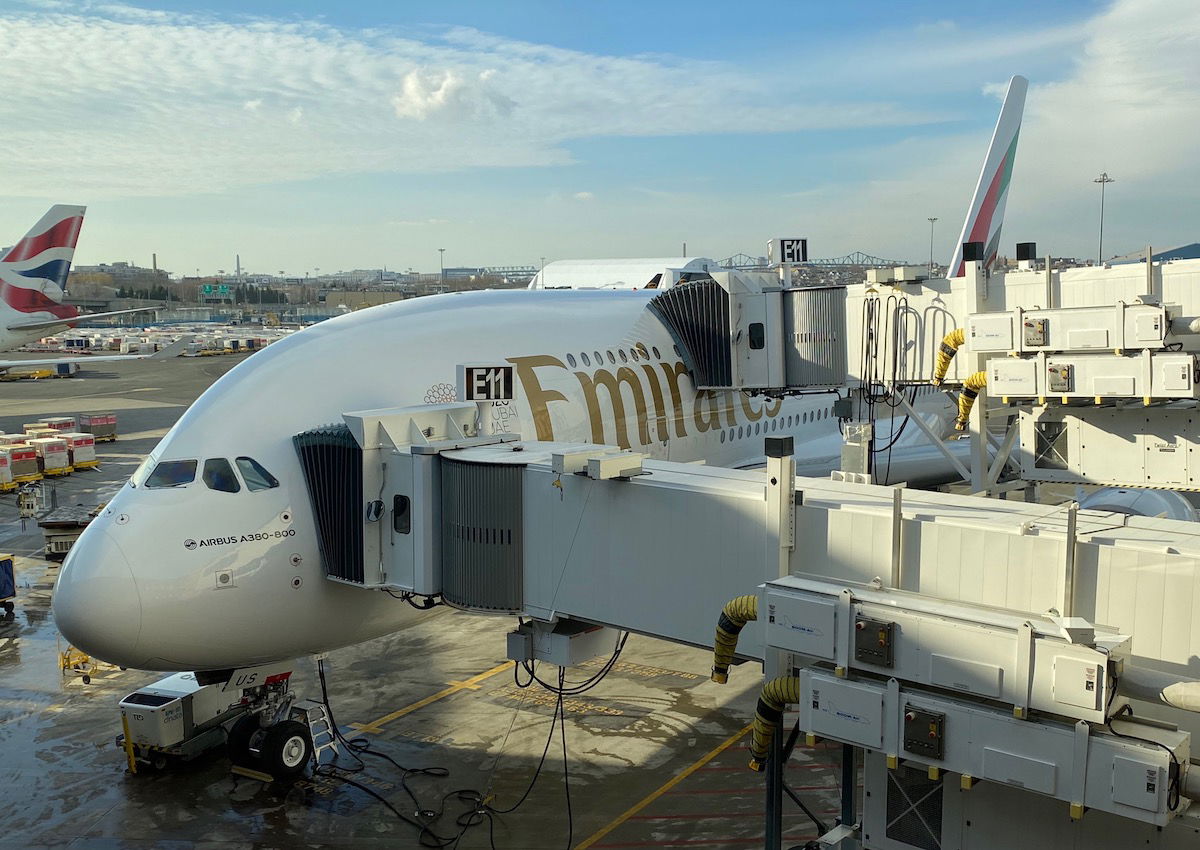
Emirates 777X interiors & passenger experience
Emirates’ 777Xs are expected to be in a four class configuration, featuring first class, business class, premium economy, and economy. While exact details remain to be seen, we do have a general sense of what to expect, so let’s talk about those details.
For one, Emirates’ new Boeing 777Xs will feature Emirates’ new “Game Changer” first class product, which is currently only available on nine 777-300ERs. This is an incredible first class (I rank it as the best in the world), and it was introduced all the way back in 2017. That wasn’t an issue when Emirates was planning on taking delivery of 777Xs in 2020, but with the five year delay, this will hardly be a new product anymore.
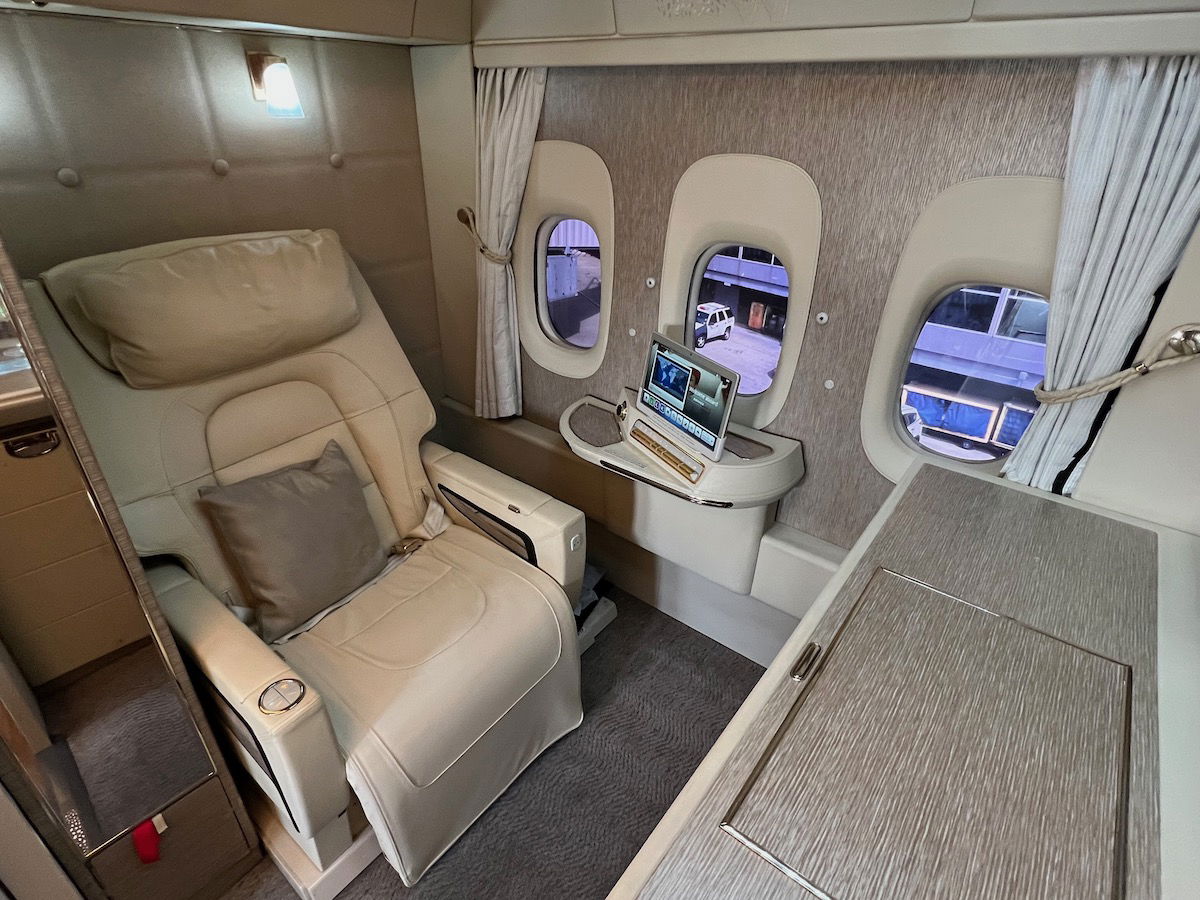
In business class, premium economy, and economy, Emirates will be partnering with Safran on new seats. The plan is that Emirates will introduce a new business class product in 2024, which will be retrofitted on existing 777-300ERs. Then the airline will introduce that same product on 777Xs and A350s.
All we know so far is that the new seats will feature direct aisle access and be fully flat, so it’ll at least be much better than Emirates’ current 777 business class.
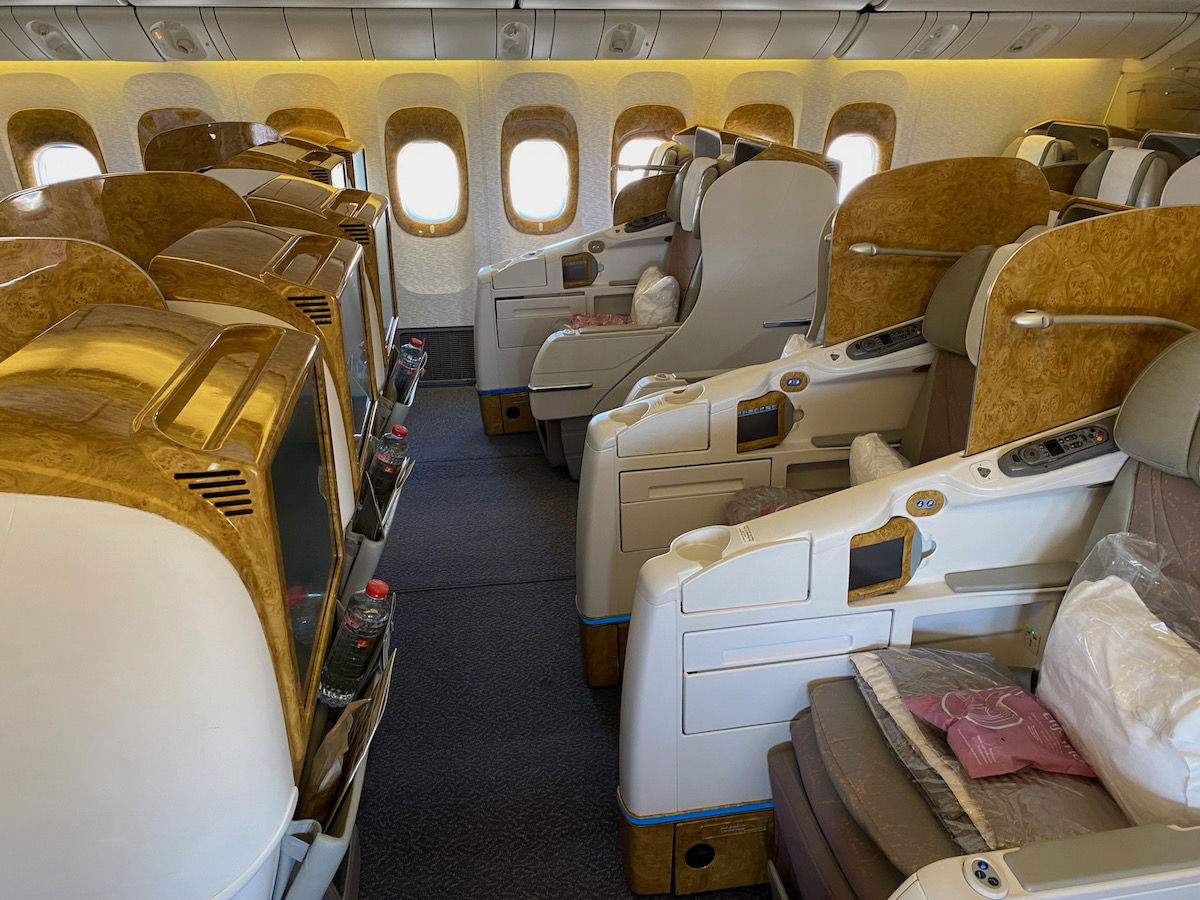
I’ve speculated in another post about what seats Emirates could choose, based on Safran’s product line. Given that Emirates seems to like staggered configurations, I think a customized version of the Safran Unity seat is the most likely outcome. However, that’s far from a sure bet.
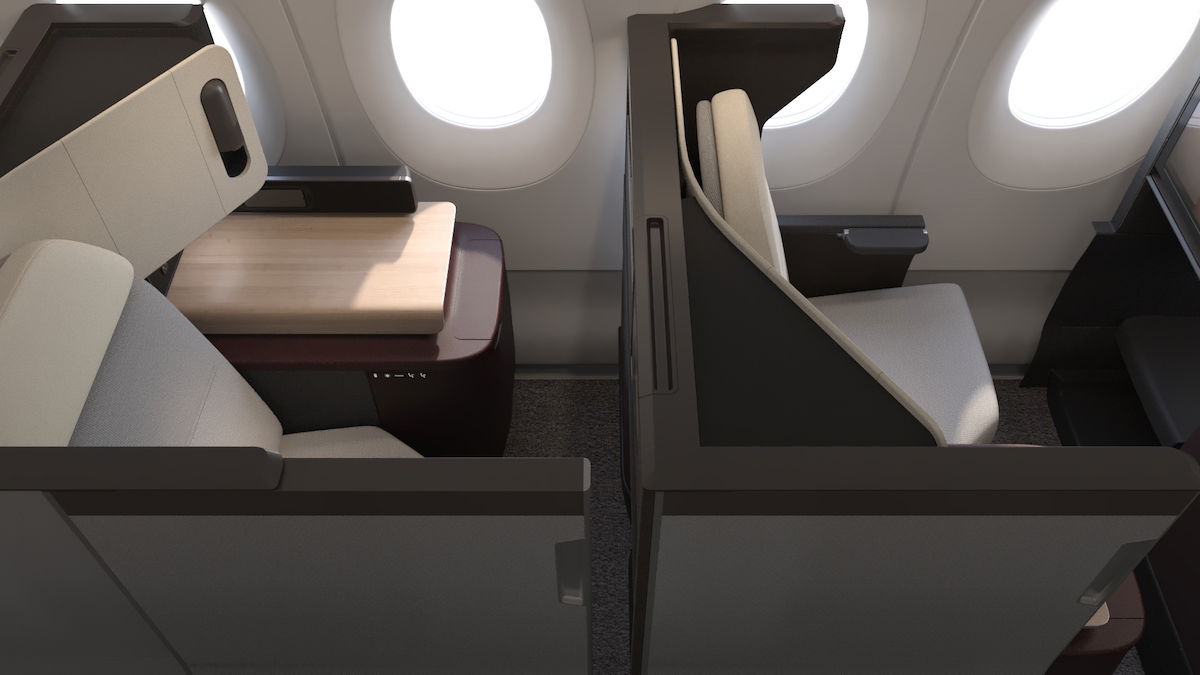
You can also expect 777Xs to feature Emirates’ new premium economy cabin, which is currently being retrofitted on existing aircraft.
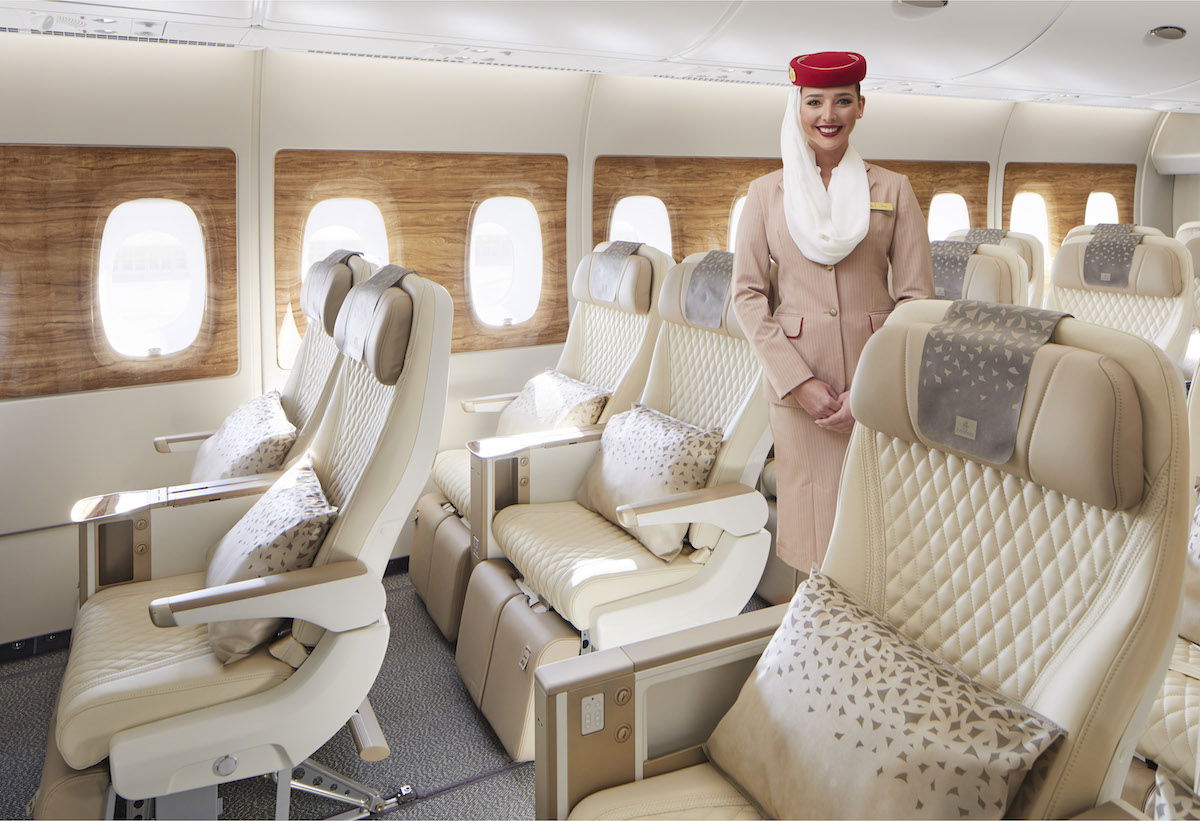
While this hasn’t been revealed, I’d also guess that Emirates will install high speed Wi-Fi, perhaps from Inmarsat’s GX Aviation system. Historically Emirates has had excruciatingly slow Wi-Fi, though starting with the A350s, the airline plans to improve this.
Emirates 777X routes & destinations
We’re still at least a couple of years off from the first 777X being delivered to Emirates, so there are no firm details as to which routes this plane will operate. That being said, it’s easy enough to make sense of Emirates’ plans here, since this will eventually be the carrier’s flagship aircraft.
Eventually you can expect the 777X to fly on Emirates’ most premium routes, going everywhere from London, to New York, to Singapore. After all, this will be Emirates’ largest and most premium aircraft.
In the interim, while A380s are still around, you can expect Emirates to use more of a mixed strategy. The airline will likely use the 777X in the most premium markets currently served by the 777. Maybe we’ll also see 777Xs put on some routes currently operated by A380s.
But unlike the A350 and 787, these planes will eventually serve the most premium and high demand Emirates routes.
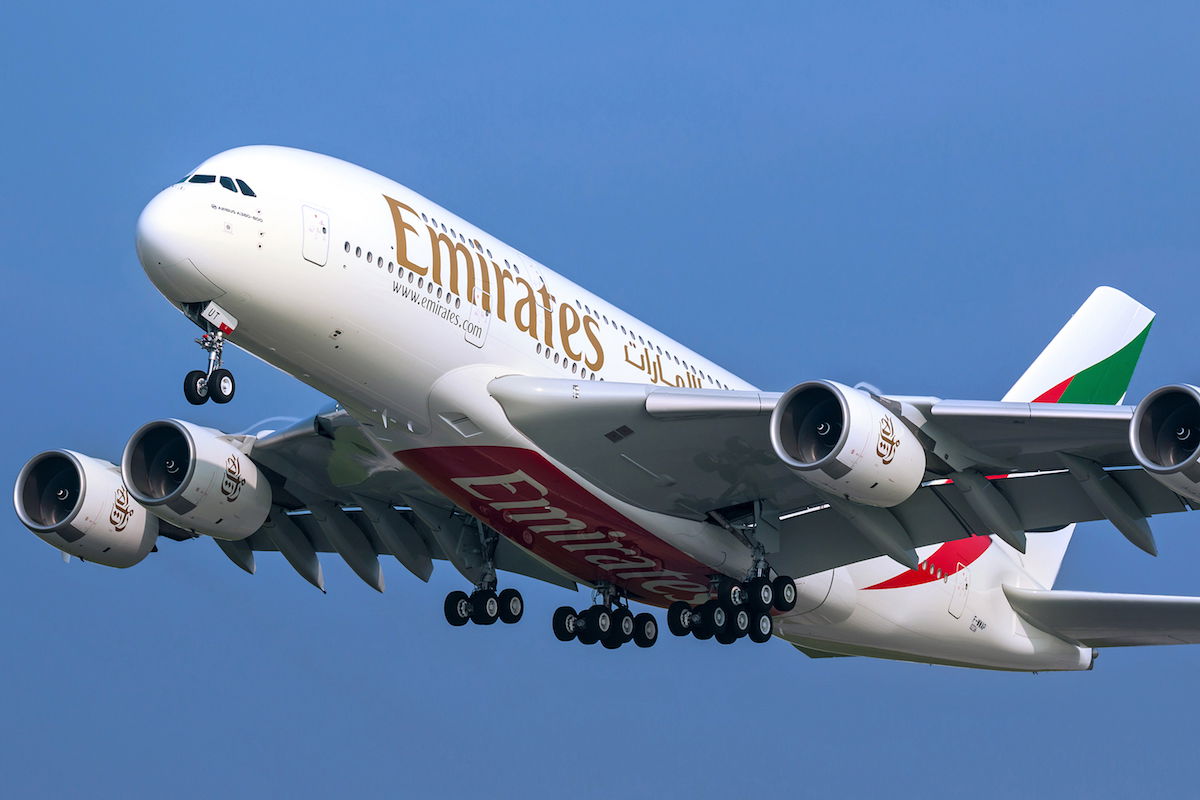
Bottom line
Emirates has an order for 205 Boeing 777Xs, including 170 777-9s and 35 777-8s. The 777X will eventually become Emirates’ flagship aircraft, as the airline retires its Airbus A380s.
You can expect Emirates to take delivery of its first 777Xs in 2025 (hopefully), and for deliveries to take place over roughly a decade. The planes will be in a four cabin configuration, and will feature Emirates’ new first class. That’s exciting, since it was introduced six years ago, and is still only available on nine planes. These planes will also feature a new business class product, which will hopefully be the best we’ve seen from the carrier.
The 777X will no doubt represent a significant improvement over the current 777s that Emirates flies, in terms of economics, passenger experience, etc. However, I still can’t picture what Emirates will be like without A380s. DXB just won’t look the same if it’s only 777Xs parked at Concourse A (though by then, perhaps Dubai World Central will be Emirates’ home?).
What are you expecting from Emirates’ Boeing 777Xs?
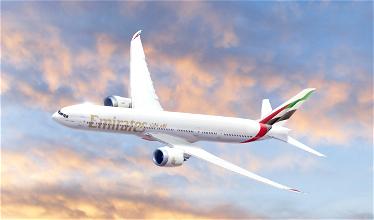

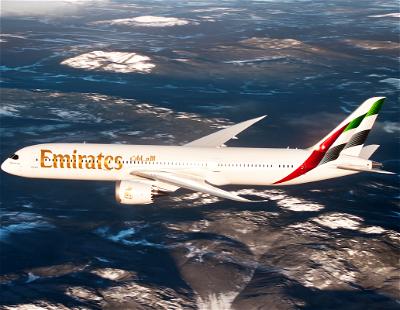
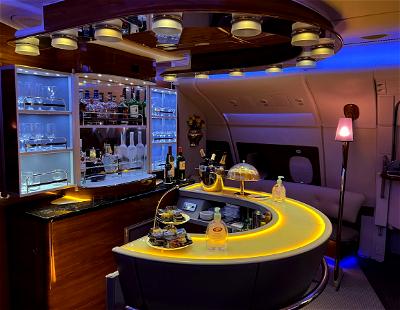
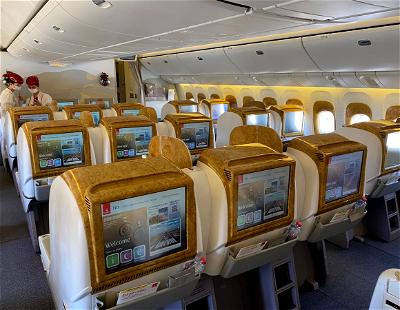
For everyone worried about flying on a B777X, they'll have no reason to worry about the engines, because not only are they based upon the world's most reliable engines yet, they have also been more thoroughly tested than any jet engines GE has ever made before.
Cannot wait to fly the X, it's gonna be a great aircraft. Boo hoo if your afraid to fly, that's like saying you won't get on an A330 because of the AF447 crash, geesh
Some people are worried about flying on the B77X when it initially rolls out. Not me. It will be one of the two most inspected plane in aviation history (along with the B737MAX) when it starts flying.
I don't fly EK however I do fly QR and other OneWorld carriers.
Why do people think Ironing board seats in business class, like those ultra thin light cheap ones found in economy in recent years, are in any way desirable.
All I can say is that with all the issues and delays that this aircraft type (777X) has endured, I certainly will NOT be among the first to get on it.
Just can't give Boeing that level of benefit-of-the-doubt anymore.... ESPECIALLY for an aircraft designed+launched in the McNerney era, as was the 737MAX.
It will be the most scrutinized and tested aircraft in the history of aviation before it launches. If anything, the extra attention is a good thing.
That wouldn't be true, as Concorde's certification process took longer (assuming 2025 for the 77X) and was far more scrutinized, for obvious reasons; yet it still had several design flaws manifest years later in service, one eventually proving fatal.
Granted, that can happen with any aircraft design-- but considering that this one's only a refresh of an extant and extremely successful model, but still managed to fail load tests, blowout at lower thresholds than anticipated,...
That wouldn't be true, as Concorde's certification process took longer (assuming 2025 for the 77X) and was far more scrutinized, for obvious reasons; yet it still had several design flaws manifest years later in service, one eventually proving fatal.
Granted, that can happen with any aircraft design-- but considering that this one's only a refresh of an extant and extremely successful model, but still managed to fail load tests, blowout at lower thresholds than anticipated, suffer uncommanded pitch incidents, while further delaying itself with nearly every approaching quarter?
......all designed under McNerny's "who cares about engineering, just raise the stock price!" era at Boeing??
Nah, f#ck that!
Will be happy to let this thing fly for a few years, before ever getting anywhere near it.
Almost amazed that anyone who's seeing its "progress" would.
Why did emirates stop at 6 planes when fitting in the new first classs?
I would love to hear your opinion on this, but I don't think that it is a given that the "game changer" First Class will be on the 777X. Originally, Emirates had planned to retrofit the new suites onto the A380 (even written in news reports back then that the cabin would fall from 14 to 11 seats). However, they have clearly chosen not to do this. With the planes flying until ~2040, it would...
I would love to hear your opinion on this, but I don't think that it is a given that the "game changer" First Class will be on the 777X. Originally, Emirates had planned to retrofit the new suites onto the A380 (even written in news reports back then that the cabin would fall from 14 to 11 seats). However, they have clearly chosen not to do this. With the planes flying until ~2040, it would be stark to have two such different First Class products in service.
I think Emirates may have realized that the returns to the game change are not worth it. With 6 vs 8 seats you need to charge 33.3% more to come to the same revenue (assuming a fully booked cabin) - maybe Emirates did not manage this. Also, First Class was popular with couples travelling together, which is harder on the new seat.
I wouldn't be surprised to see Emirates introduce a vastly improved First Class product on the 777X (ottomans, new design, etc.), but based on the previous 1-2-1 layout they have on the older 777-300ERs. There clearly has been some re-thinking about the new First Class over the past years. If it were working so well, we'd see it on more planes.
@ Doreen Standler -- Not to question you, but do you mind sharing a source from back when that was said? I've been following the evolution of EK's new first class since the beginning, and I don't ever remember the airline ever committing to installing this on the A380s (while the airline has committed to installing it on 777Xs). Of course it's possible that I'm wrong, though, as my memory sometimes isn't the best.
I don't think they committed to the A380 - my last stand was the same that you mentioned in your article (along the lines of - "it's very expensive to retrofit"), but clearly they decided against it. They must have removed the article that references 11 vs 14 seats (and it seems many other articles on the topic have been removed)...
So they never committed to it, but clearly it was an option that they...
I don't think they committed to the A380 - my last stand was the same that you mentioned in your article (along the lines of - "it's very expensive to retrofit"), but clearly they decided against it. They must have removed the article that references 11 vs 14 seats (and it seems many other articles on the topic have been removed)...
So they never committed to it, but clearly it was an option that they decided against. I just feel like they may be re-evaluating whether that product is the best way to go on the 777X, or whether they can satisfy the market with an update to the old First Class (e.g., ANA and Air France have some of the world's best First Class products and their setup is the same).
I also remember reading something about EK's plans for A380 retrofits, and how the cabin would go from 14 to 11 seats. I read it on a few sources a few years ago.
I think the original reason EK decided to only have 9 planes with the new suites was so the airline could roll it out on a widespread basis when the 777X starts getting delivered. Right now it is a niche product, only...
I also remember reading something about EK's plans for A380 retrofits, and how the cabin would go from 14 to 11 seats. I read it on a few sources a few years ago.
I think the original reason EK decided to only have 9 planes with the new suites was so the airline could roll it out on a widespread basis when the 777X starts getting delivered. Right now it is a niche product, only available on a few routes. Otherwise, EK's old first class suites aren't "obsolete" and people still love to fly them. Had they retrofitted it onto other planes, it would have a bigger footprint and people would then expect to maybe get the new suites, and then be disappointed when they got the old suites. That's my guess as to the thinking before the 777X delays. But I do think it is possible that EK may introduce a new version of its First Class suites with some improvements on the 777X
Ben, EK only has 35 778s on order and 170 779. A few years ago(2021 I think?) they cancelled their orders for the 778 and have only enough them back since it’s been redesigned to match the freighter, +4 fuselage frames.
@ AnishReddi -- Whoops, thanks for the correction. Fixed!